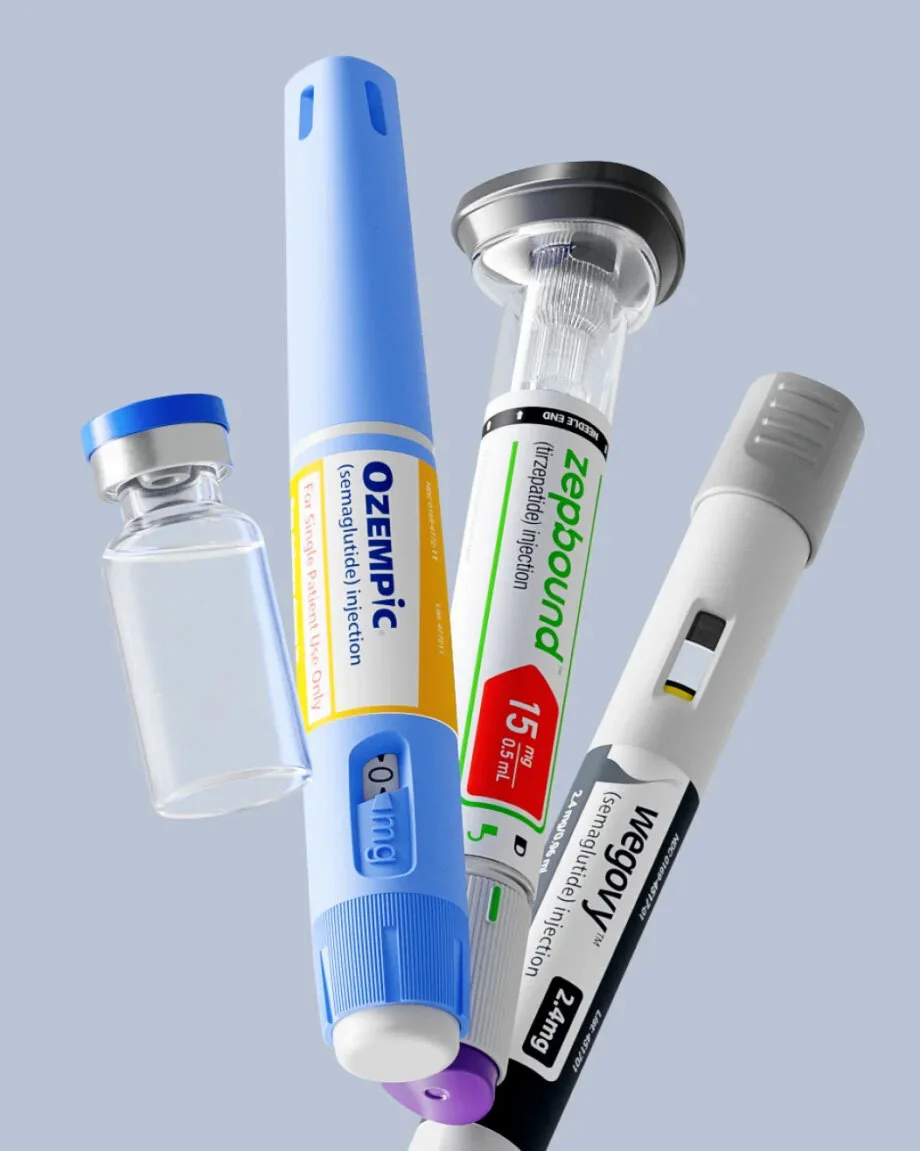See Important Safety Information, including Boxed Warning, about:

Pomegranate Health – GLP-1 Safety Information
GLP-1 receptor agonists are prescription medications that help regulate blood sugar and appetite. They are not appropriate for everyone. The following information summarizes key warnings, risks, and precautions. This document is intended for clinical compliance and educational use only.
Contraindications
GLP-1 receptor agonists are contraindicated in patients with:
• Personal or family history of medullary thyroid carcinoma (MTC)
• History of Multiple Endocrine Neoplasia syndrome type 2 (MEN 2)
• Known hypersensitivity to GLP-1 medications or their components
Warnings and Precautions
• Thyroid C-Cell Tumors: Observed in rodent studies; relevance to humans is unknown. Patients should report neck swelling, hoarseness, dysphagia, or dyspnea.
• Pancreatitis: Cases, including fatal and non-fatal, have been reported. Discontinue immediately if suspected.
• Gallbladder Disease: May increase risk of cholelithiasis and cholecystitis. Monitor for abdominal pain, fever, jaundice.
• Gastrointestinal Effects: Nausea, vomiting, diarrhea, constipation are common, particularly during initiation.
• Hypoglycemia: Increased risk with insulin or sulfonylureas. Dose adjustment may be required.
• Acute Kidney Injury: Associated with dehydration from severe GI reactions. Monitor renal function.
• Diabetic Retinopathy: Rapid improvement in glycemic control may worsen retinopathy; monitor closely.
Common Adverse Reactions
Most frequently reported include:
• Nausea
• Vomiting
• Diarrhea
• Constipation
• Abdominal pain
• Reduced appetite
• Indigestion
Serious Adverse Reactions
Seek medical attention immediately for:
• Severe or persistent abdominal pain
• Symptoms of pancreatitis (pain radiating to back, nausea, vomiting)
• Vision changes or worsening diabetic retinopathy
• Symptoms of gallbladder disease (pain, fever, jaundice)
• Signs of hypersensitivity (swelling of face/lips/tongue, rash, difficulty breathing)
Special Populations
• Pregnancy: Not recommended; discontinue if pregnancy is recognized.
• Breastfeeding: Safety data insufficient; not recommended.
• Pediatrics: Not established for patients under 18 years of age.
• Geriatrics: Monitor closely for heightened sensitivity.
Drug Interactions
• Delayed gastric emptying may impact absorption of oral medications.
• Increased hypoglycemia risk with insulin and sulfonylureas; dose adjustment may be needed.
• Caution with concurrent weight-loss therapies; limited evidence available.
Monitoring Recommendations
Clinicians should monitor for:
• Blood glucose control
• Renal function
• Symptoms of pancreatitis and gallbladder disease
• Signs of thyroid mass
• Progression of diabetic retinopathy
Disclaimer
This information is provided by Pomegranate Health for clinical compliance and educational purposes. It is not a substitute for individualized medical advice. All treatment decisions must be made between the clinician and patient based on full clinical judgment.
Administration Guidance
GLP-1 receptor agonists are administered via subcutaneous injection. They are not given intravenously or intramuscularly. Patients should be counseled on proper injection technique, rotation of injection sites, and safe storage and disposal of injection pens or vials.
Recommended injection sites include:
• Abdomen (at least 2 inches from the navel)
• Thigh (front of upper leg)
• Upper arm (outer area, if administered by another individual)
Injection sites should be rotated with each dose to minimize the risk of localized reactions.
Injection Site Reactions
Local injection site reactions have been reported, including:
• Redness
• Swelling
• Itching
• Pain or tenderness
Most reactions are mild and self-limited. Persistent or severe reactions should be reported to the prescribing clinician. Patients should be advised not to inject into areas that are tender, bruised, scarred, or hardened.
Pregnancy Registry
A pregnancy exposure registry is available for patients who are exposed to GLP-1 receptor agonists during pregnancy. The purpose of the registry is to monitor maternal and fetal outcomes following exposure. Clinicians should encourage pregnant patients to enroll in the registry and report any exposures. Information on how to participate in the registry can be obtained through the prescribing provider or by contacting the medication manufacturer directly.